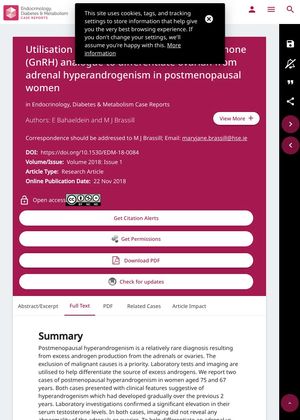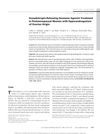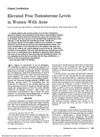Utilization of Gonadotrophin-Releasing Hormone Analogue to Differentiate Ovarian from Adrenal Hyperandrogenism in Postmenopausal Women
November 2018
in “
Endocrinology, Diabetes & Metabolism Case Reports
”

TLDR GnRH analogue can help diagnose ovarian causes of high testosterone in postmenopausal women when scans don't show the cause.
The document from 2018 reported two cases of postmenopausal hyperandrogenism in women aged 75 and 67 years, who had elevated serum testosterone levels. Imaging did not reveal any abnormalities in the adrenals or ovaries. To identify the source of excess androgens, a single-dose GnRH analogue was administered, which suppressed testosterone levels, indicating an ovarian source. Both patients underwent bilateral oophorectomy, revealing benign tumours. The study suggested that GnRH analogue can be used as a diagnostic tool to confirm an ovarian source of hyperandrogenism when imaging is inconclusive. The document also mentioned that GnRH analogue has been used in the treatment of postmenopausal ovarian hyperandrogenism as a non-surgical alternative, successfully suppressing testosterone levels and normalizing symptoms in three cases.

